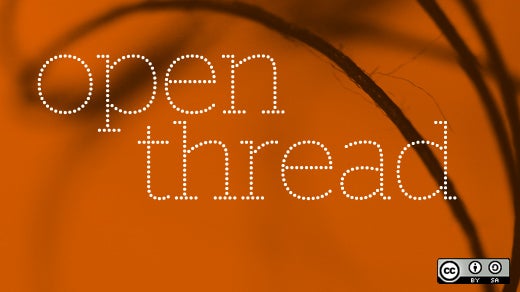It happens all the time. You're at a party, someone asks about your work, and yet again, you have about 45 seconds to describe one of the greatest innovations in human history.
There's the public utility metaphor. The shared infrastructure "like a bridge or a road" idea. Waterworks. Rural electric co-op's.The car with the hood welded shut. The Wikipedia analogy. The scholarly tradition. Libraries. The scientific method. Bucket brigades, quilting bees, and barn raisings. Seed banks and sustainable agriculture.
When we try to explain open source ideas to people
who have never heard of them, there are lots of ways to go, but few of the paths lead to absolute clarity.
In our never ending search for the grand unifying metaphor of all things open source, we're wondering how you talk about open source when it's your turn to speak up.







7 Comments